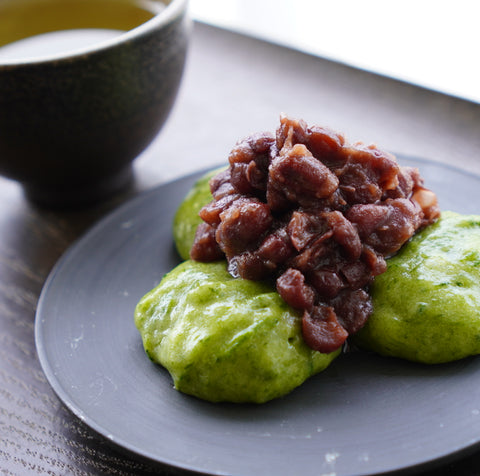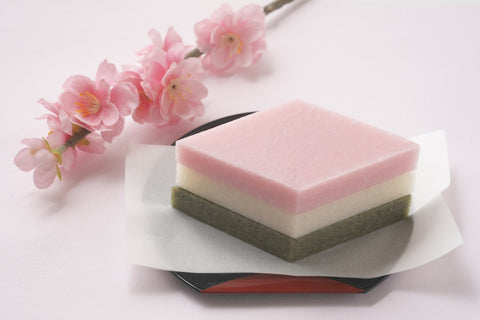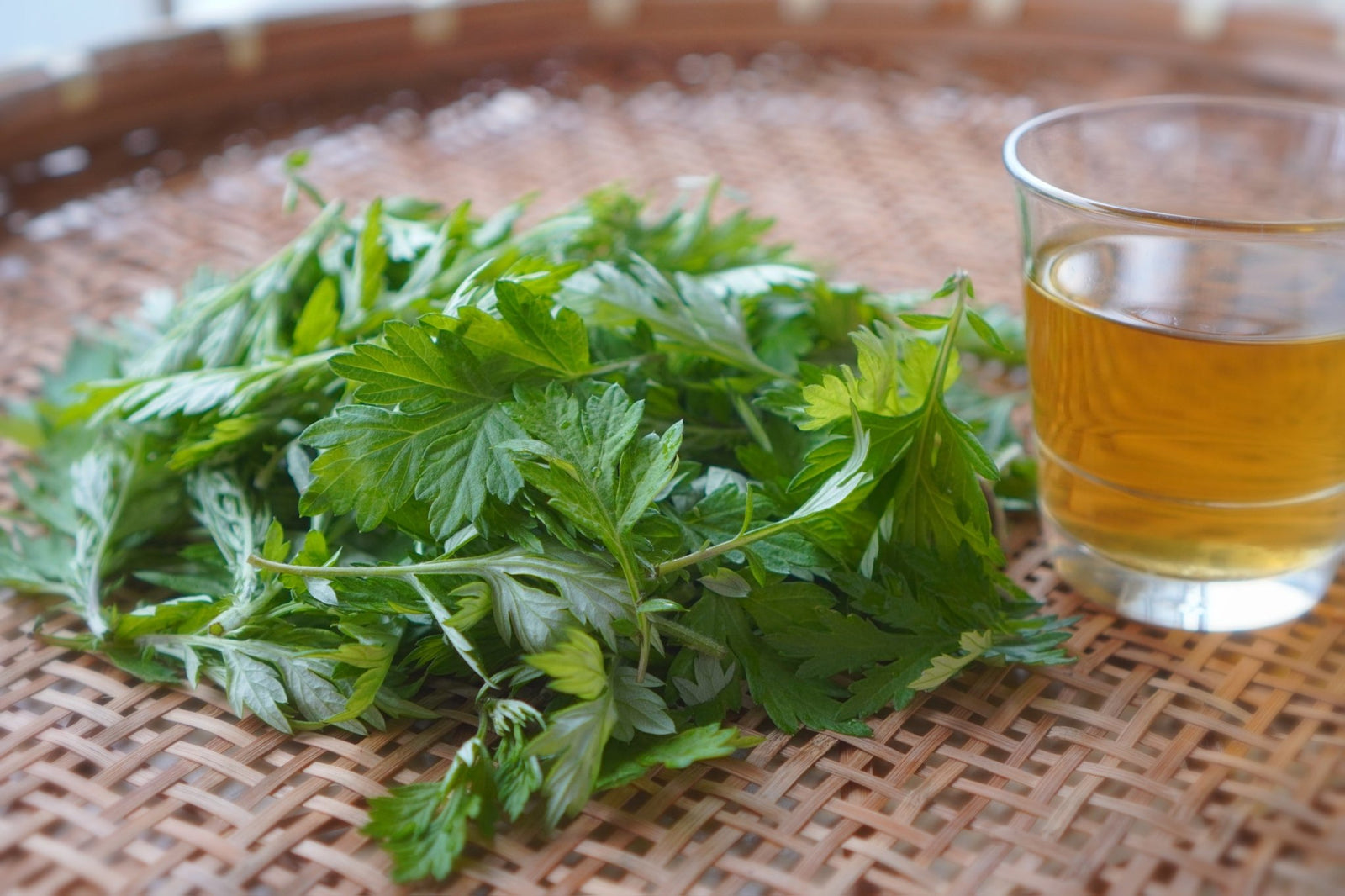What's Yomogi ?
We can see this plant growing in March-April in Japan.

It is called Yomogi (Japanese Mugwort).
Yomogi or Japanese mugwort (Artemisia Princeps, belonging to Asteracease) is related to the common mugwort (Artemisia vulgaris) found in Europe. It's a perennial plant and grows wild in the mountains, hills and even cities, all over Japan except for Hokkaido.
Traditionally, it has been eaten as food and taken as a treatment for a variety of health conditions, and was also believed to protect against evil spirits.
History as Food
Japanese people pick the young leaves as Sansai (wild edible plants) in spring and eat them boiled and seasoned or Tempura (battered and deep-fried). The special grassy aroma and the bitter taste give us a spring feeling.
 Yomogi leaves in Tempura
Yomogi leaves in Tempura
Eating them in traditional confectionaries such as Mochi (rice cakes), or Dango (sweet dumpling) is more popular these days.

Yomogi Mochi(rice cake)
Making Yomogi mochi is one of my favorite activities in spring. Check out the article if you are interested in how to make it. Yomogi(よもぎ) -Japanese Mugwort , How to Make Yomogi Mochi
Yomogi mochi is used for celebrations in spring. This is Hishimochi (diamond-shaped rice cake) which is for the Doll’s festival / Peach festival on 3rd March.

This is Kashiwamochi (rice cake wrapped in Japanese oak leaves with sweet bean paste) which is for Children's day on 5th May.

It is thought Yomogi has been used for the spring celebrations and to protect children or people from evil sprits.
History as as a Herbal Medicine
Yomogi has been treated as an all-purpose herbal medicine over long history, which was first mentioned as a a medical herb in the book written in 850-858 ,and has been an important part of people's lives since. It was said to; such as to stop bleeding and have anti-bacterial properties, to relieve itching and to prevent skin from insect bites until chemical medicine was developed and got popular.
Yomogi is also said to be effective for mouth ulcers. I got two of them in my mouth the other day, so I tried! I gargled with the infused Yomogi-water every time after I ate 5-7 times that day. The next morning, they had gone! It worked very well. I proved it!
For detoxing, indigestion, stomach acidity, circulation problems, relaxing, hormonal balancing and other complains..., you can use Yomogi. Wow ! Now we can see why Yomogi is called “All-purpose herbal medicine”. Yes, it’s absolutely true!

Recently, Yomogi has been given attention again ,especially for woman. Many products such as tea, powder, extract oil, skin lotion and cream have been developed, and people enjoy them with drinking, cooking, bathing, skin caring and relaxing.
It could be more popular in the next few years as it seems people started to think more about living with the nature.It could be interesting for you to research and search for your local mugwort, and how to enjoy it.
Related Articles
・Yomogi(よもぎ) -Japanese Mugwort , How to Make Yomogi Mochi
・What "Spring Bitterness" Brings to You in Japan
Today's Recommendation
・Yomogi (Mugwort) Powder from Aomori, Kyo no Kanbutsuya 京の乾物屋 青森産よもぎ使用よもぎ粉
Dried Yomogi powder from Aomori. Add the powder into pancakes, cookies and cakes. Enjoy it as tea ,by pouring hot water in a cup.

・Nakazen: Turmeric (ukon) Tea (tea bags, 2g x 15)
Herbal blend tea from Okinawa including Yomogi
Ingredients: ukon (tumeric), hatomugi (Job's tears), Ryukyu yomogi (Artemisia princeps, or Japanese mugwort), persimmon leaves, sarunokoshikake (Dryad's Saddle), Himalayan goji leaves, sicklepod (seeds), mikan (Japanese mandarin) peels, amagusa (Chinese licorice), Chinese cinnamon



4 comments
Thank you for sharing an interesting story! I’ve also done it to make me warm, and improve digesting.
My grandmother used it as radiation treatment. She’d dry it out and mash it. Then formed tiny pea sized balls out of them. When my mom had terrible stomach pains and digestive problems as a child, grandmother would put 4 of these little balls around my mom’s naval equidistant from each other and a finger joints distance from her naval. Then she would make them glow with fire. After feeling the heat for a little bit, the little balls were taken off. Mom, now 90, still has the scars. But, she never had the stomach problems again. Maybe she was scared to be burned again?😆
Thank you for your comment. I usually put some yomogi in boiling water and boil for 1-2 minutes, and I drink the hot one without any sweetener. I think this is the typical way that people used to do. But I also sometimes enjoy it with soy milk, sometimes with honey, too.
Is it typically prepared in a certain way as a drink? Hot or cold? Sweetened or unsweetened? Sugar or honey? Etc.
To me, personally, the bitterness is refreshing so long as it’s not brewed for too long (I wouldn’t brew it more than 2 minutes or so). It seems like it would be tasty either hot or cold. I’ve liked it with honey rather than sugar. But, I’m curious as to how it’s prepared in Japan (if there is a particular way).